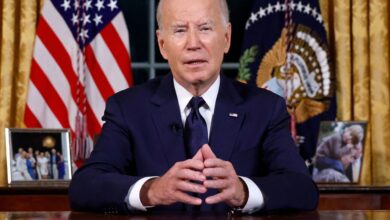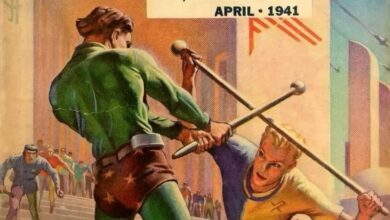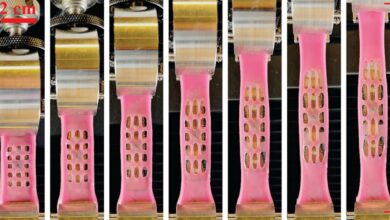Codeveloper of NASA’s Newest Lunar Retroreflector Dies at 78

Christopher Davis
Codeveloper of a lunar retroreflector
Life Fellow, 78; died 1 April
Davis taught engineering at the University of Maryland in College Park for 48 years.
Born in Manchester, England, he moved to the United States in 1973 to work as an instructor and research associate at Cornell. He left two years later and joined the faculty in the University of Maryland’s electrical and computer engineering department.
His research focused on RF communications systems, advanced surveillance systems, chemical and biological sensors, and optical systems.
He authored or cowrote textbooks including Lasers and Electro-optics and Building Scientific Apparatus.
In 2019 he and his Maryland colleagues developed a lunar retroreflector—an instrument placed on the moon that reflects laser pulses sent from Earth back to their origin point—for NASA. The device enables more precise measurements of the distance from the Earth to the moon, allowing better mapping and navigation of the moon’s surface. It is scheduled to fly to the moon this year aboard a Firefly vehicle.
Davis was an active member of an IEEE coordinating subcommittee that developed standards for testing wireless phones to ensure they comply with international standards designed to protect the public from harmful RF exposure.
The University of Maryland recognized him with awards including the 2015 Lin Innovation Award, the 2014 Senior Faculty Outstanding Research Award, and the 2012 Poole and Kent Senior Faculty Teaching Award.
Davis was a Fellow of the Institute of Physics and SPIE, the international society for optics and photonics.
After receiving a bachelor’s degree in natural sciences in 1965 from Cambridge, he went on to earn a master’s degree there, then a Ph.D. in physics in 1970 from the University of Manchester.
Erling Hesla
Proponent of industrial safety standards
Life senior member, 98; died 18 May
Hesla was dedicated to improving electrical safety and the development of IEEE Standard 902-1988: Guide for Maintenance, Operation, and Safety of Industrial and Commercial Power Systems. It was the first IEEE standard to provide guidance for safe workplace practices regarding industrial electrical systems.
Hesla began his career in the late 1940s at a Canadian engineering firm, where he worked in manufacturing and sales support. Later he moved to Brazil and worked as an engineer on large hydroelectric projects. When he returned to the United States, he became an assistant manager at a construction firm.
He was also an entrepreneur, founding two Washington state–based companies: consulting firm Hesla and Associates, on Camano Island, and electrical engineering firm EngePower-USA, in Edmonds.
Hesla received IEEE Member and Geographic Activities’ 1998 IEEE Wilson Transnational Award. He then was honored with the 2017 IEEE Kaufmann Award for outstanding contributions to industrial systems engineering.
He earned a bachelor’s degree in electrical engineering in 1947 from the University of British Columbia, in Vancouver.
David Douglas Stephen
Electrical engineer
Life member, 100; died 1 March
Stephen served in leadership positions at electrical equipment manufacturer British Thomson-Houston, in Rugby, England. He joined BTH in 1942 after receiving a bachelor’s degree in engineering from the University of Glasgow. While working at the company, he was the principal engineer for several large-scale projects including the Lochaber Aluminum Smelter installation in Scotland—the last plant of its kind in Britain. Aluminum smelters extract refined metals from ores.
He helped design, install, and test large bulk carriers and tankers including the SS Canberra and the HMS Challenger.
Stephen retired in 1994 as a director of engineering at BTH.
In 1958 Stephen’s Synchronous Motors and Condensers was published. It was the first of three books he would write on power and mechanical engineering.
He joined IEEE in 1963. He was also a member of Beama and a life member of the Institution of Engineering and Technology.
In 1984 he was honored with the Freedom of the City, a lifetime achievement award bestowed by London.
Bert de Kat
Biomedical engineer
Life senior member, 93; died 1 February
De Kat founded engineering design firm Bio-Tech Co. of Ontario, Canada. There he developed an apparatus for transferring liquid samples—for which he was granted a Canadian patent.
He began his career at Canadair, an aviation company based in Montreal. He helped install flight instrumentation on the CP-107 Argus, a maritime patrol aircraft designed and manufactured for the Royal Canadian Air Force. De Kat left Canadair to work at RCA Research Labs in Montreal before moving to Saskatoon to join the electrical engineering department at the University of Saskatchewan.
After teaching for a few years, in 1963 he moved to Toronto and began working at the University of Toronto’s Institute of Biomedical Engineering. He served as an engineering technologist there for 12 years.
He founded Bio-Tech in 1970 in Lynden, Ont., relocating the company to neighboring Troy in the early 1990s. He retired in 2020.
An amateur radio operator since he was a teenager, de Kat was a member of ARRL, the Antique Wireless Association, and the London Vintage Radio Club. He was a life member of the Radio Amateur Satellite Corp.
He received an associate degree in electronics technology in 1955 from the Provincial Institute of Technology and Art (now the Southern Alberta Institute of Technology), in Calgary, Canada.
IEEE Spectrum



